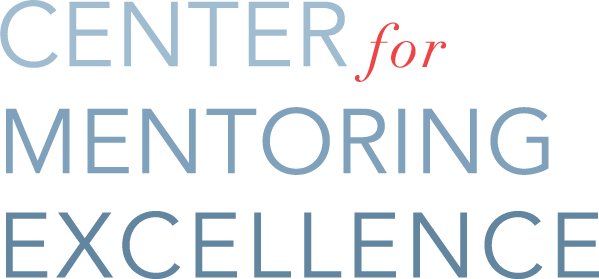by Center for Mentoring Excellence | Mar 7, 2013 | Uncategorized
Creating a mentoring culture is a work in progress. This means you need to be minding your Ps and Qs: continuously monitoring, assessing and enhancing your efforts. If you keep these six Ps in mind – preparation, priority, position, pool, politics and progress – they should enhance your efforts and further help you embed good mentoring practice in your organization. (more…)
by Center for Mentoring Excellence | Mar 6, 2013 | Uncategorized
Author and missionary William Arthur Ward once said, “Opportunity is often difficult to recognize; we usually expect it to beckon us with beepers and billboards.” While many believe that mentoring opportunities arise organically and in the moment, we believe that effective mentoring programs require continuous optimization of opportunity. Often opportunities are right there in front of us and yet we fail to recognize them or bargain them away, thinking that we will find the time to get to them later. (more…)
by Center for Mentoring Excellence | Jan 31, 2013 | Uncategorized

1. Be actively engaged in a mentoring relationship, or have had previous mentoring experience.
2. Make your own growth and development in the role a priority. Continue to grow your knowledge, information and resources so that you can bring energy and enthusiasm to your mentoring program.
3. Get the data collection process started early on and keep the momentum going.
4. Stay in contact with past participants. Find out how they are applying what they’ve learned, get their feedback on your program and consider them as possible future mentor candidates.
5. Always ask yourself, “What more can I be doing to raise the bar on our mentoring program?”
6. Be on the lookout for opportunities to creative value and visibility for mentoring. Make sure that your leaders are continuously updated on mentoring activities and successes.
7. Be selective in whom you choose to be your program mentors. Remember not everyone should be a mentor.
8. Provide your mentors with feedback so they can continue to elevate their mentoring practices.
9. Ensure time, resources, and leadership support are part of your program infrastructure.
10. Develop a leadership succession plan for the next leader of your mentoring program.
11. Make sure you have enough champions throughout the organization; creating a mentoring culture requires mentoring advocacy.
12. Create a continuum of mentoring education and training programs.
by Center for Mentoring Excellence | Jan 17, 2013 | Advice for Leaders
How are you leading? What could you do better to improve your team’s performance and level of satisfaction? (more…)
by Center for Mentoring Excellence | Jan 16, 2013 | Uncategorized
 1. Be open and honest with your mentor about your challenges on the job, weaknesses in your leadership, and issues you need to address. Your willingness to be vulnerable demonstrates your commitment to mentoring and strengthens your relationship with your mentor.
1. Be open and honest with your mentor about your challenges on the job, weaknesses in your leadership, and issues you need to address. Your willingness to be vulnerable demonstrates your commitment to mentoring and strengthens your relationship with your mentor.
2. Prepare an agenda or points for discussion and send them to your mentor in advance of your meetings. Outlining topics facilitates self-reflection and helps crystalize your thinking. During the meeting, an agenda keeps you focused and helps you use your time more efficiently. Your mentor will appreciate your preparedness and the serious way in which you approach the engagement.
3. Create a written mentoring agreement. It lays the groundwork for the relationship to move forward. It also provides a benchmark to measure progress and ensures that you stay on track.
4. Identify stretch goals that will truly impact your success, and push yourself to produce discernible results. Your mentor will continue to invest time in the relationship when there is tangible evidence that their efforts are making a difference. Remember that an effective mentoring relationship shouldn’t be too comfortable or complacent. .
5. Take charge of your relationship. While a strong mentor can help you be successful, the responsibility for identifying goals, developing an action plan and staying focused on your learning lies with you. You are in the driver’s seat!


 1. Be open and honest with your mentor about your challenges on the job, weaknesses in your leadership, and issues you need to address. Your willingness to be vulnerable demonstrates your commitment to mentoring and strengthens your relationship with your mentor.
1. Be open and honest with your mentor about your challenges on the job, weaknesses in your leadership, and issues you need to address. Your willingness to be vulnerable demonstrates your commitment to mentoring and strengthens your relationship with your mentor.
